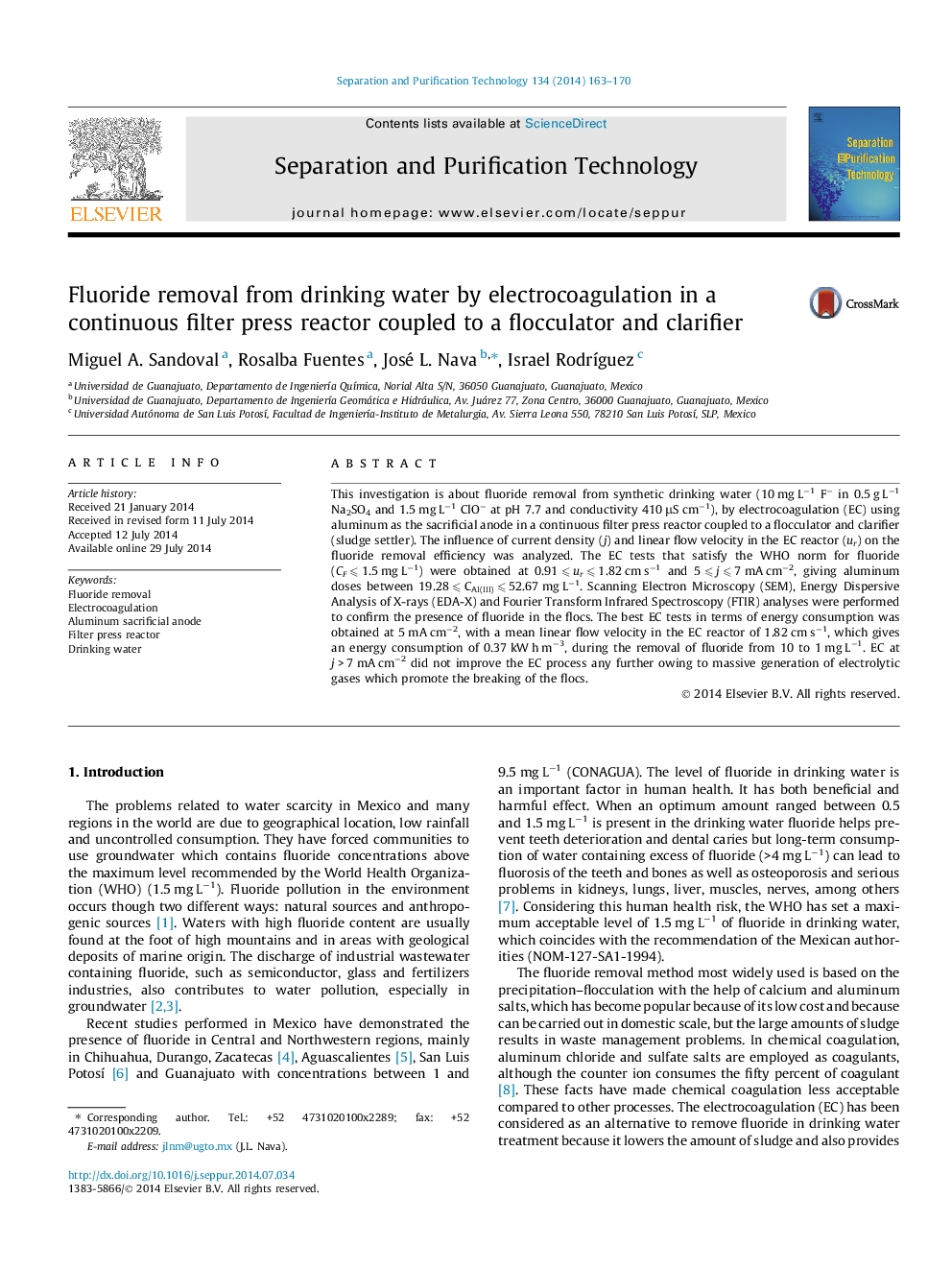| Article ID | Journal | Published Year | Pages | File Type |
|---|---|---|---|---|
| 641166 | Separation and Purification Technology | 2014 | 8 Pages |
Abstract
This investigation is about fluoride removal from synthetic drinking water (10 mg Lâ1 Fâ in 0.5 g Lâ1 Na2SO4 and 1.5 mg Lâ1 ClOâ at pH 7.7 and conductivity 410 μS cmâ1), by electrocoagulation (EC) using aluminum as the sacrificial anode in a continuous filter press reactor coupled to a flocculator and clarifier (sludge settler). The influence of current density (j) and linear flow velocity in the EC reactor (ur) on the fluoride removal efficiency was analyzed. The EC tests that satisfy the WHO norm for fluoride (CF ⩽ 1.5 mg Lâ1) were obtained at 0.91 ⩽ ur ⩽ 1.82 cm sâ1 and 5 ⩽ j ⩽ 7 mA cmâ2, giving aluminum doses between 19.28 ⩽ CAl(III) ⩽ 52.67 mg Lâ1. Scanning Electron Microscopy (SEM), Energy Dispersive Analysis of X-rays (EDA-X) and Fourier Transform Infrared Spectroscopy (FTIR) analyses were performed to confirm the presence of fluoride in the flocs. The best EC tests in terms of energy consumption was obtained at 5 mA cmâ2, with a mean linear flow velocity in the EC reactor of 1.82 cm sâ1, which gives an energy consumption of 0.37 kW h mâ3, during the removal of fluoride from 10 to 1 mg Lâ1. EC at j > 7 mA cmâ2 did not improve the EC process any further owing to massive generation of electrolytic gases which promote the breaking of the flocs.
Related Topics
Physical Sciences and Engineering
Chemical Engineering
Filtration and Separation
Authors
Miguel A. Sandoval, Rosalba Fuentes, José L. Nava, Israel RodrÃguez,
